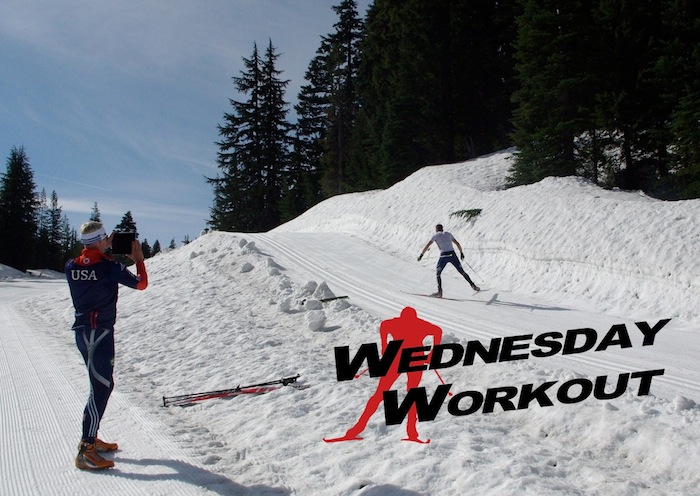
Welcome to Wednesday Workout, the newest workout series on FasterSkier. During the offseason, we’ll feature components of summer training programs from top individuals and teams throughout the U.S. and Canada at the junior, college and elite club levels. If you ever have a workout suggestion or training question, send them in to info[at]fasterskier.com.
***
As athletes ease back into training this spring, they will gradually introduce each component of their training plan back onto the table: distance. Strength. Threshold intervals. Hard intervals.
What about overdistance? “OD”s are long, base-building affairs, and it can be hard to know where to start after a month or more of relaxing. Can you jump straight into a two-hour run? A three-hour rollerski?
The U.S. biathlon team is luckier than most, as coaches Per Nilsson and Jonne Kahkonen say that all of their athletes are returning to camps this May at about the same level of fitness; that removes some of the guesswork. Today in Bend, Oregon, they’ll be tackling a classic OD on snow, probably in the range of three to four hours, depending on the athlete. In the thick of the training season, cross-training workouts on the bike could last up to five, but there’s no need for that now.
That said, this is the first volume block for the team. The coaches estimated that in nine days, divided into two four-day training blocks with a rest day in the middle, the biathletes would hit between 35 and 40 hours total.
“Bend is the place to be if we are talking big hours in the beginning of the season,” Kahkonen said. “It’s perfect here to get on snow and have the opportunity in the afternoon workouts to go out for either mountain biking or running.”
As the athletes build their endurance base and prepare for other types of workouts, Nilsson and Kahkonen discussed how to execute today’s workout well – both if you’re lucky enough to be on snow, or if you’re stuck doing dryland.
The Workout: “The main goal for sure for all this type of workouts is to have as much continuous work as possible and not too many stops,” Kahkonen said. “In our training system we have Wednesday as the day when we have a long session in the morning and then a halfday off. Here the standard is 3-4 hours.”
As always, there’s a balance between skiing continuously and getting something useful out of the workout besides just the hours. The team tries to have some OD sessions that focus on technique as well.
“It’s important to work on the key elements in the ski technique: postition, weightshift, rhythm, and balance, even if you are going pretty slow,” Kahkonen said. “This is not easy to do from the focus side, but you can see that the athletes that have that in the mind are most of the time also the athletes that have the best technique. We either work with the video or sometimes try to follow an athlete.”
(“It gets harder every year,” he smiled.)
As for the pace, it can’t be too fast or too slow. How to control it?
“By heart rate or feel,” the coaches said. “If you can talk the whole time then the pace is too slow!”
Some teams throw in sprints or mini speeds along the way to break things up; Nilsson and Kahkonen eschew that, saying they’d save it for other workouts. For them, an OD is a continuous workout, and the next most important thing to focus on is technique.
As such, they have their athletes ski mostly solo, especially in skate OD’s, where there is a more technical focus.
“For the specific workouts it’s better to go more alone,” the pair explained. “If you ski side by side and talk, it’s not so productive for the ski technique. In other activities it’s fun and they can run, hike, or bike together in the group.”
Finally, the team knows how lucky they are to be on snow right now. It’s a recent development; last year was the first time the biathlon squad made the trip to Bend, and before that they started their seasons in Lake Placid with dryland.
For athletes in similar positions, Kahkonen had a few suggestions about how to ease the body into dryland OD’s.
“If you are on other places, I think cross-training is good in the beginning,” he said. “You can combine two different activities so you don’t overdo it, especially the impact from the pavement.”
Chelsea Little
Chelsea Little is FasterSkier's Editor-At-Large. A former racer at Ford Sayre, Dartmouth College and the Craftsbury Green Racing Project, she is a PhD candidate in aquatic ecology in the @Altermatt_lab at Eawag, the Swiss Federal Institute of Aquatic Science and Technology in Zurich, Switzerland. You can follow her on twitter @ChelskiLittle.



